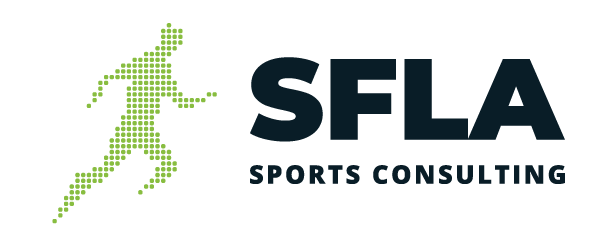By Athena Constantinou, APC Sports Consulting Ltd
The current modus operandi of Sports Academies
Current Practices
Currently sports academies focus on creating the conditions necessary to produce world class players and as a result, they concentrate on teaching ‘the sport’ rather than teaching athletes valuable life skills along with mastering the sport tactics. The majority of academies are in favor of talent development and more geared towards a sporting lifestyle. They may offer some type of secondary education and sometimes they may aid in career placement, if the player does not make it to the professional team. The latest trend is to encourage a dual career whereby athletes are encouraged to pursue a University education, parallel to their sporting career.
Focus is on exceptional performance
The current focus of sports academies on talent development and exceptional sporting performance is more of a one sided approach. This approach benefits the sporting aspect alone and does not focus on the player as a whole person. There is a tendency of coaching through the use of old tactics such as winning at all costs, hunting for trophies and winning competitions. Basically such an approach uses and applies adult and elite athlete methods to the young athletes who attend the academy. In addition, this approach puts extreme pressure on the young athletes as it creates expectations that all academy students are considered successful only if they make it to the professional team. Such an approach does not leave much room for another outlet or other options in case the young academy athletes do not make it to the professional team. Furthermore, the focus of this approach is just on the athlete and not on the person and does not offer much in terms of a well-rounded personal development for the academy athletes.
The trend of moving to a holistic model
A number of sports academies, both in Europe and the United States, are currently looking into a more holistic model of developing athletes. As part of this holistic model, and in addition to the athletic development of their players, academies are diversifying their curriculums to include education, empowerment, psychological and financial development and other life skills. As part of moving towards a holistic model, academies also devote time on the commercial development of their athletes and educate them on career choices, lifestyle choices and success orientation. A major component of the holistic model movement has to do with the psychosocial development of athletes through which athletes are empowered to form aspirations and become confident enough to turn these aspirations into reality.
The Holistic Model of Athlete Development
Definition
The Holistic model of athlete development focuses on the player and the player’s athletic, personal, emotional, psychological, academic, social and financial development. The Holistic model basically focuses on producing better people, not just better players. The following graphic illustration of the Holistic Athletic Career (HAC) model clearly depicts all of its components during the lifetime of the athlete.
Holistic Athletic Career (HAC) Model

Figure 1: The holistic athletic career model (Wylleman, De Knop, & Reints, 2011). Dotted lines indicate the age at which the transition approximately occurs. NGB stands for National (Sports) Governing Body; NOC stands for National Olympic Committee.
Why is a holistic view important when developing athletes
A holistic view of developing athletes contributes to the personal growth and maturity of the athlete; it prepares athletes not just for being successful at their sport but for being successful in life after sport as well; it helps athletes develop both hard and soft skills which are necessary for their life as a whole; finally, it enhances the athletes’ sport career choices including their career choices outside of sport.
The parents’ role in the holistic model
The parents need to understand the benefits of the holistic approach so that they encourage their athlete children to reap the benefits of such programs. Parents can enhance the effectiveness of the holistic model by cooperating with academy trainers who teach their athlete children. A few sports academies have gone the extra mile and they offer sport parenting programs as well. Such programs enable parents to encourage and support their children with both academics and sports and they also guide parents in preparing for the financial burden of sending their children to university.
The Academy’s role in the holistic model and the development of an appropriate culture and environment
Sports academies first have to identify the need for adopting the holistic approach. As soon as they understand the benefits of adopting such an approach it will be easy to create an implementation plan for its adoption. Along with the adoption of a holistic model of athlete development, academies need to create the appropriate culture and nurture a holistic learning environment. As part of their holistic program, academies should also look into creating non-sporting opportunities for their athletes during the off-season so that athletes apply the skills they have acquired and get hands-on experience.
The Contribution of Holistic Programs to Athlete Growth & Development
Financial Education
Financial education programs are a key essential to the optimal development of athletes. The percentage of academy players who will go on to the professional level ranges between ,05% to 1% of all academy players. Therefore the vast majority of academy athletes may very well end up having a conventional non-sporting career. It is important to equip these athletes with life skills such as financial concepts, which will give them the tools to be able to make financial decisions that may have a lifelong impact. It is commonly acknowledged that lack of financial literacy is one of the factors contributing to bad financial decisions with negative effects (INFE/OECD, 2009; Gerardi, Goette and Meier, 2010).
Financial literacy is now globally acknowledged as an important element of economic and financial stability and development, especially in view of the fact that there is a greater supply of complex financial products and services we need to understand and, the fact that younger generations need to fund their retirement, healthcare, children education and so on. Younger generations are likely to be more financially included in their adulthood than older generations, as they are expected to perform a wider variety of financial activities throughout their lives. Furthermore, the development of appropriate financial skills may also boost entrepreneurship and provide youngsters with additional tools in case they experience economic hardship.
Personal Development
The contribution of age-targeted personal development programs towards the development of young athletes is of paramount importance as they equip young athletes with a toolbox to be used throughout their life. First of all, they help athletes deal better with the sporting environment, sporting lifestyle, sport career stressors and sport career choices. In addition, athletes attending such programs are better prepared for life after sports as these programs help them mature faster.
Personal development programs strengthen the whole person and not just the athlete; they help young athletes excel in and out of sport by giving them both roots to grow and wings to fly. Such programs give athletes the skills to cope in the modern world by both challenging and supporting them throughout their sports academy years.
Conclusion
Adopting a Holistic model of athlete development through the use of both financial and personal development programs will have a positive outcome for society in general. Such programs will lead to an improved sporting culture as a whole and to higher levels of social responsibility. Of course, one of the greatest effects on society will be the empowered youth which will come out of sports academies, who will more likely be well-rounded and responsible members of the society.
We believe that the holistic model of athlete development is the way to go for sports academies wanting to make an impact. Balancing the well being of their athletes with their athletic performance through financial education and personal development programs parallel to their athletic programs, will help sports academies turn out better players and better humans at the same time!
For more information and a discussion of the holistic model of athlete development and how it can benefit your organization and athlete members, you may contact us at [email protected].

